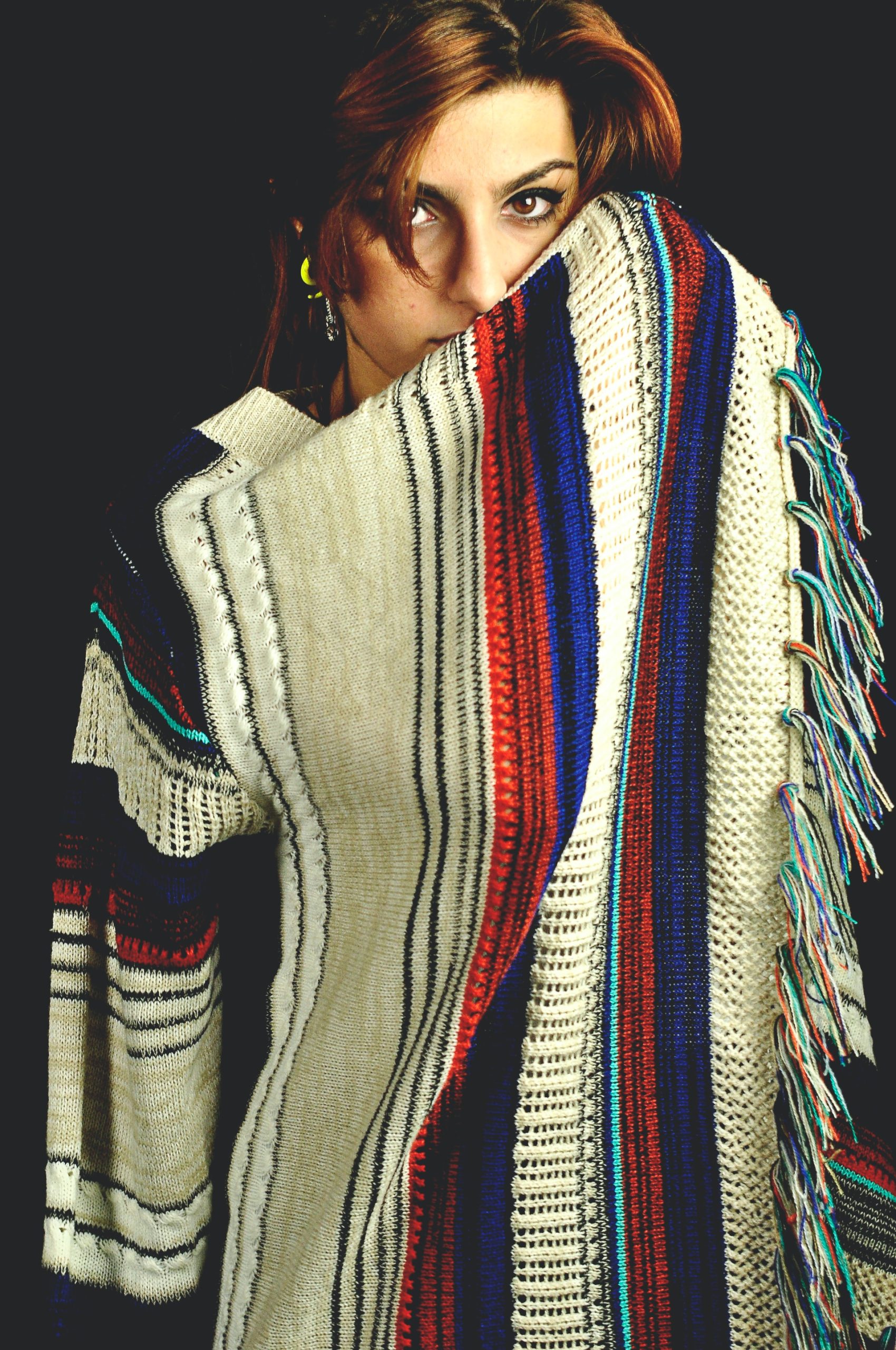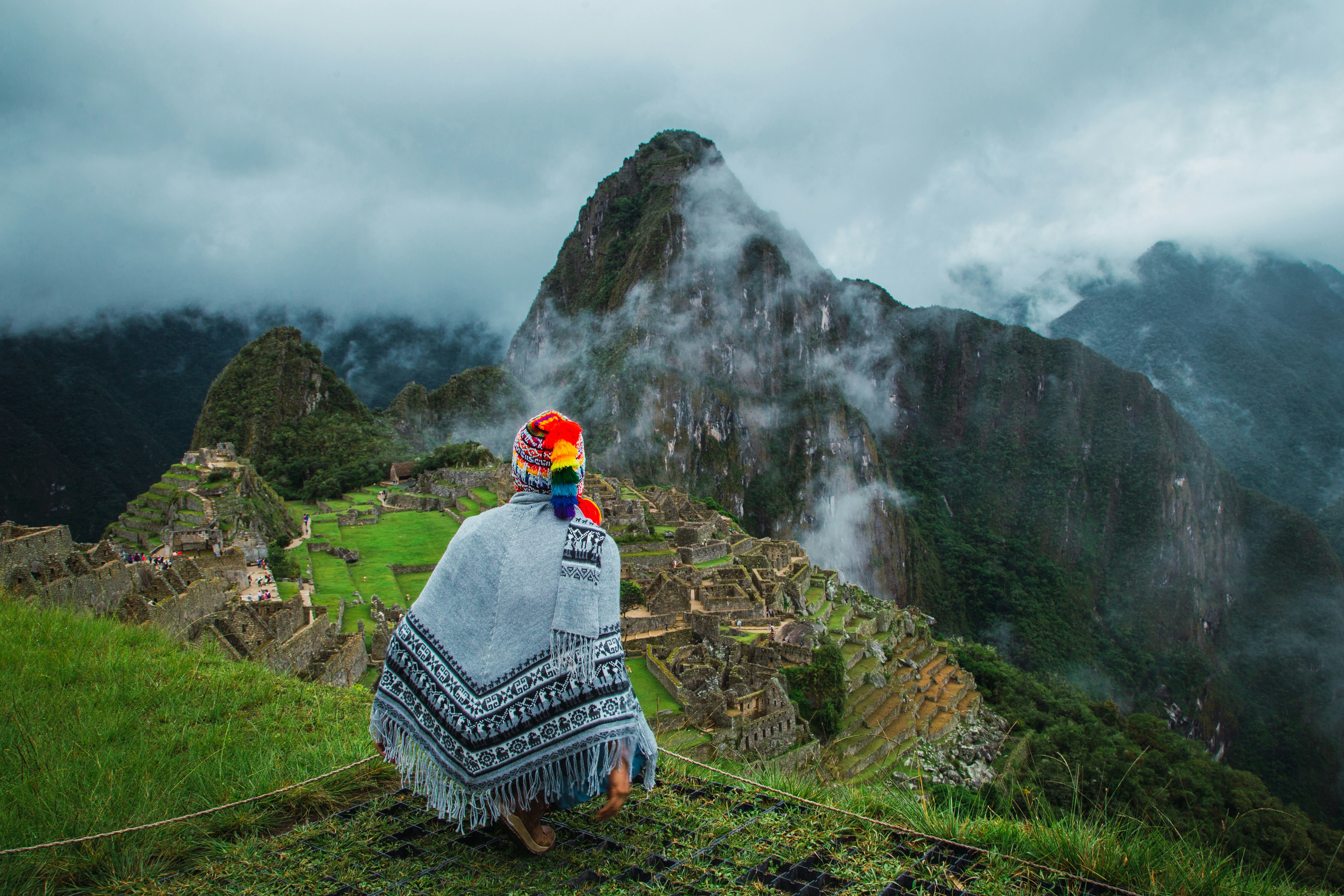
From poncho or cloak to ruana or wrap, these garments go by many different names. Whatever you choose to call it, these names all describe the same family of garments. The poncho is a folded piece of sweater fabric, or two pieces of fabric joined together, that is made to be worn over the head or wrapped around the body. With examples of poncho fashion spanning hundreds of years, it’s one of the oldest forms of clothing that still exists. Originating in South, Central, and southern North America, these unique pieces of clothing have a long history and are still making fashion statements today.
History of the Poncho

Long before Peru and Bolivia were exporting cozy sweaters, the people there were hard at work making ponchos. These garments appeared, some 1000 years before Christ, in the coastal Peruvian town of Paracas. Historians have tied the clothing to an offering for the burials. Different pre-Columbian cultures gave importance to the clothes as something that should accompany you to the afterlife. For those cultures, the garment was made to last beyond death. The fabric was weaved with Alpaca fiber because it was considered the only fiber that could last for all eternity. In Paracas, mummy bundles dating back to 300 BC have revealed incredibly elaborate wraps. What is more incredible is that by that time, Paracas culture had been going strong for 500 years! You could say that this is a fashion trend with some strong staying power!
The designs were usually elaborate embroideries on a plain-weave field. They typically depicted animals, birds, flying shamans, and warriors holding severed heads. While the idea of a severed head emblazoned across your clothing today may not be the “it” fashion statement you are going for, these ancient designs were thought to be ceremonial. One type, called a Huanuy, was used for mourning or grief. It was designed with small red stripes representing the blood and Earth. Another, called a Cushma, was a smaller garment used for travel. These were usually black or navy blue with edges of red, green, and white colors. These few examples demonstrate the wide range of uses for these ancient garments. From burial to travel, these wraps played a significant role in the lives of many early cultures.
The Poncho Evolves
Around 1,000 years after the garment was first created, the Incas furthered this fashion trend by using brilliantly colored alpaca wool decorated with complex geometric designs. These designs usually indicated the status of the person wearing the garment and highlighted their role in the Incan society. Unlike the people of Paracas, the Incas used a wide range of weaving techniques and even employed the art of tie-dyeing the fabric. Archeologists have even found evidence of wraps made of feathers.
With the destruction of Pre-Columbian South American and Mexican cultures by the conquistadors and others, the Native American wrap evolved to become both a dignified dress garment and a functional piece of outerwear for farmers and shepherds. In Mexico, it became the Serape blanket worn by Mexican peasants. In Peru and Bolivia, the designs continued to vary with the colors and patterns representing different villages and regions. Unlike the ever-changing fashion of today, designs of these traditional garments changed very slowly over time. In Andean society, men wore wraps and women wore smaller squares of fabric that they pinned around their shoulders. The garment as we know it today comes from the early 18th century and is a variation of the Unku, a variety of vests with a central opening, which would have become a tunic.
The Poncho Today

While the originals first originated in ancient South America, it wasn’t until the 1970s when these versatile garments became a style statement in the Western world. In the height of the hippie and bohemian movements, ponchos were made from a single piece of fabric and were thrown over the body in an effortless style for every kind of occasion. Fringing, Navajo patterns, and crochet were big features of these ponchos. More recently, designers have given the garment the catwalk treatment and have added decorative hoods, pockets, and other embellishments. Today they are considered an essential item in the modern woman’s wardrobe.
With time, ponchos have become a fashion item stretching far beyond South America and Mexico. The womens poncho comes in various styles and colors and some knitted ponchos and ruanas echo their ancient origins. With their increased popularity, you have a multitude of options to choose from. Whatever your decision, however, you can be confident that this is one garment that will not likely be going out of fashion anytime soon.



